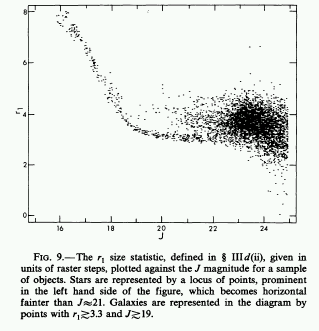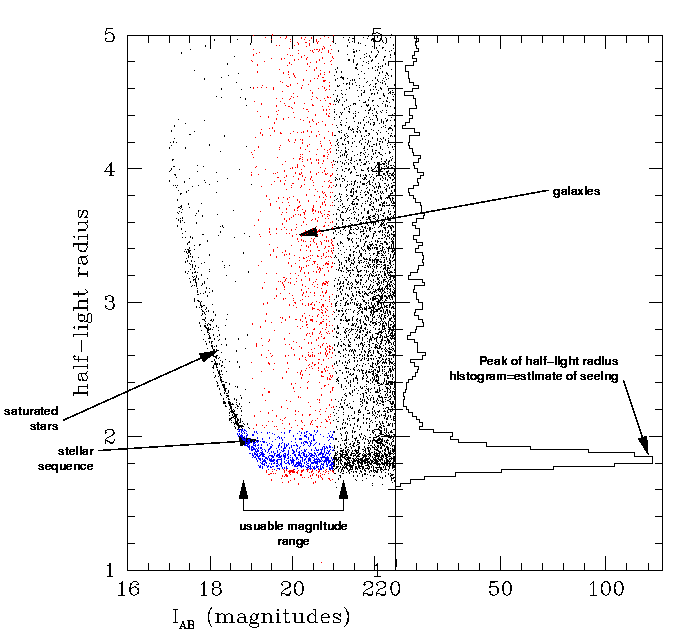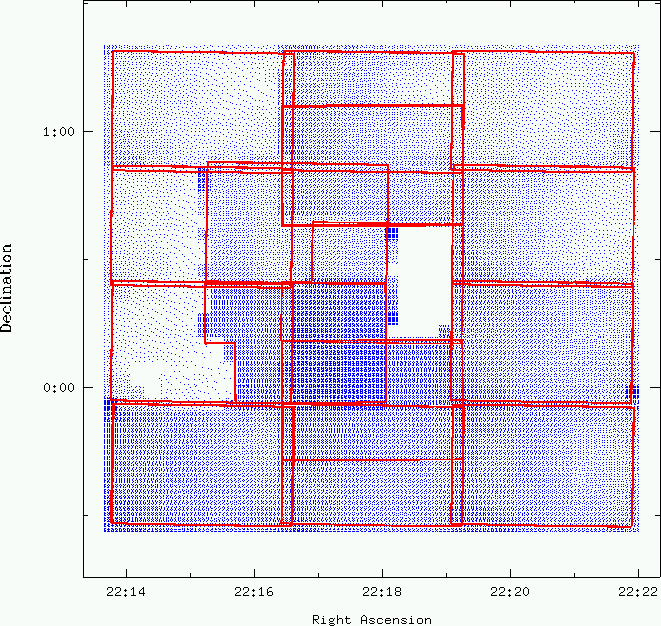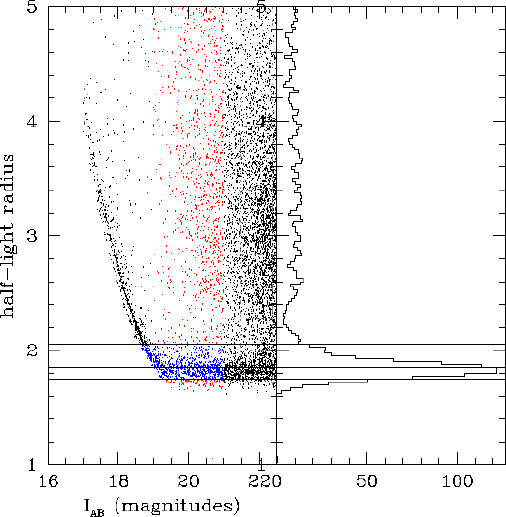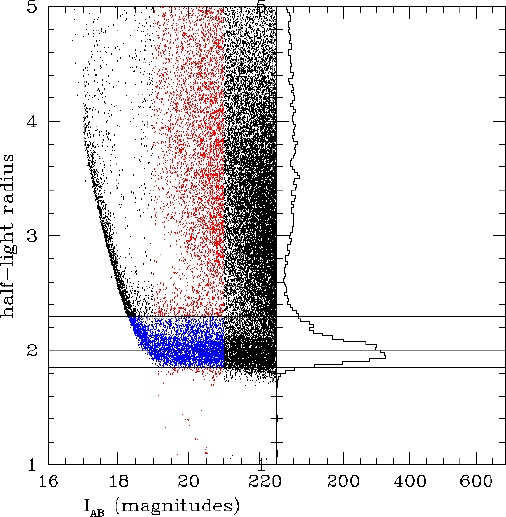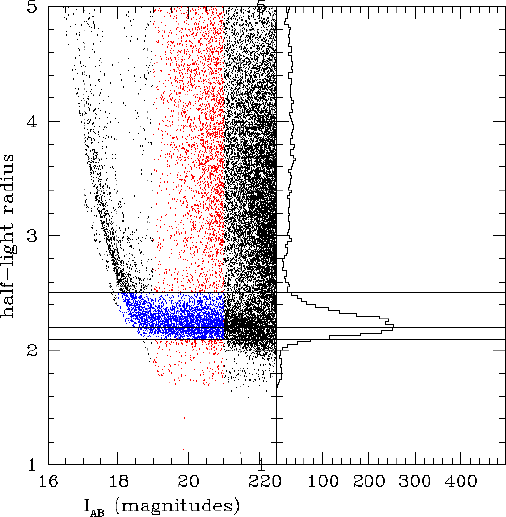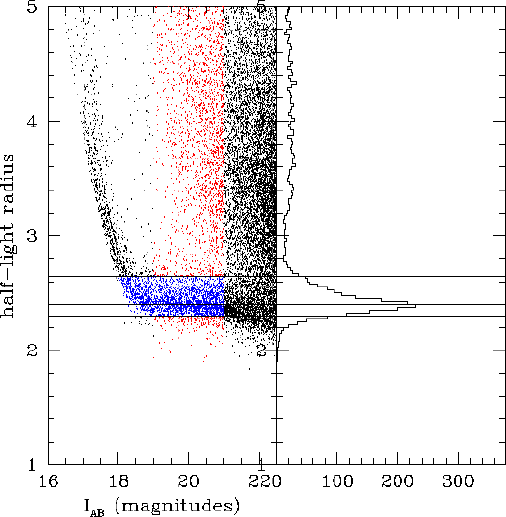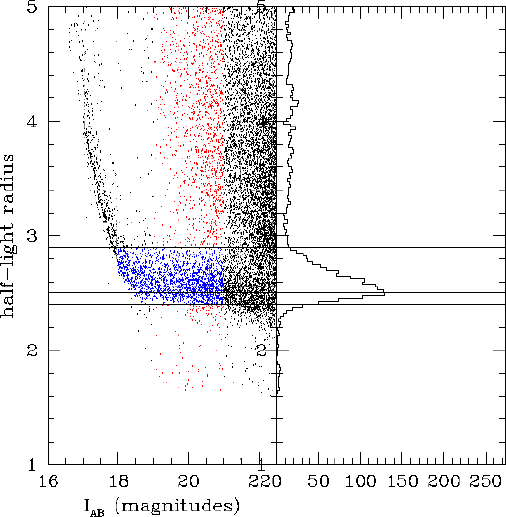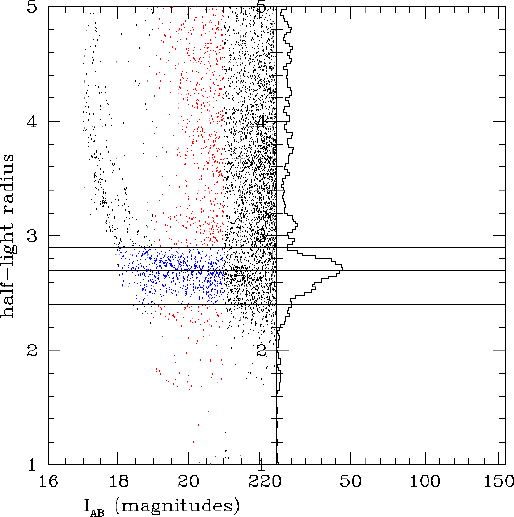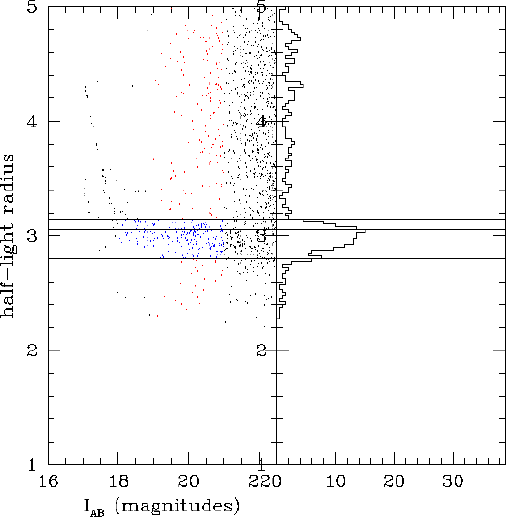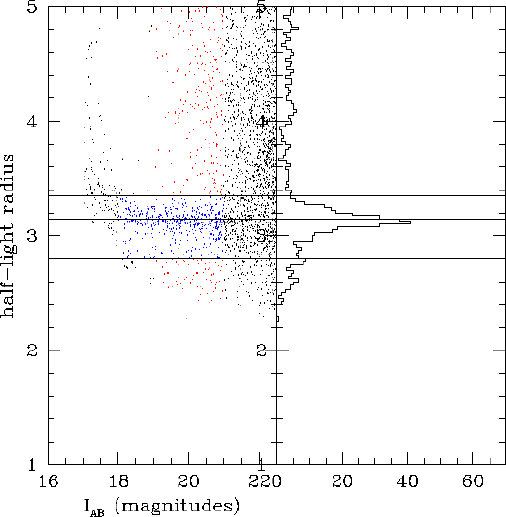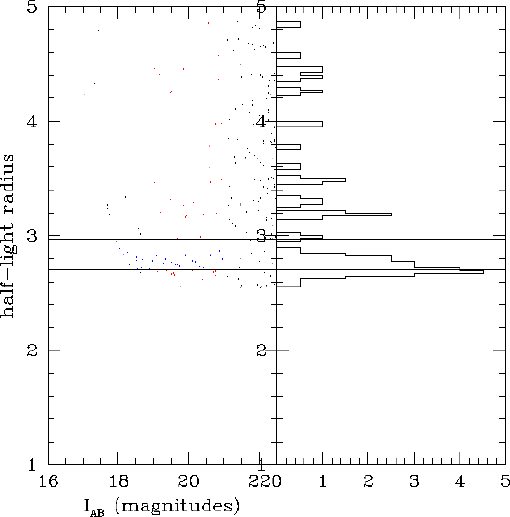The usual way to do star-galaxy separation for a given catalog is to plot the radius ( R-2 or the half-light radius) of the objects in the catalog against their magnitudes. The locus of point-sources on this plot can be identified as an over-density in the magnitude-radius plane. This illustrated at right top with a figure from Kron (1980)
In general, this locus is very obvious and the stellar sequence can be identified by hand. Cuts in magnitude and radius can be made to identify stars. However, in the case of the VVDS fields, the data was taken over several observing runs and under different seeing conditions. As the seeing changes the location of point sources on the radius-magnitude plane will change.
Complicating matters, the VVDS images have been mosaiced into one large image. The seeing varies accross this image from about 0.6 to 1.0 arcsecond. This web page describes how the star-galaxy separation for F22 I band frame were generated. To sumarize:
- The seeing is measured accross the image.
- Regions of similar seeing are grouped together
- The stellar locus is automatically identified within these regions
- Objects within the stellar locus are flagged as stars.
